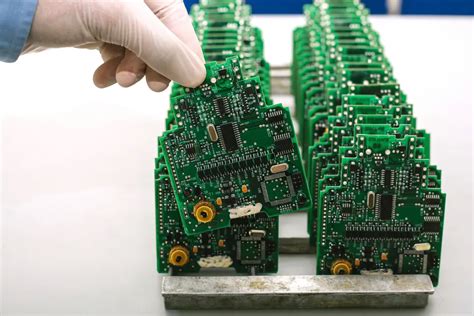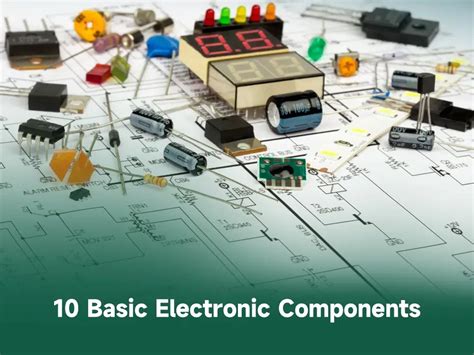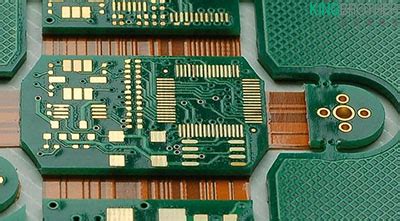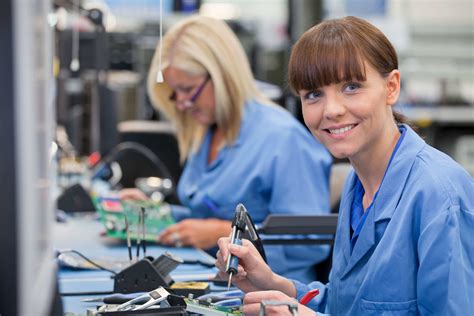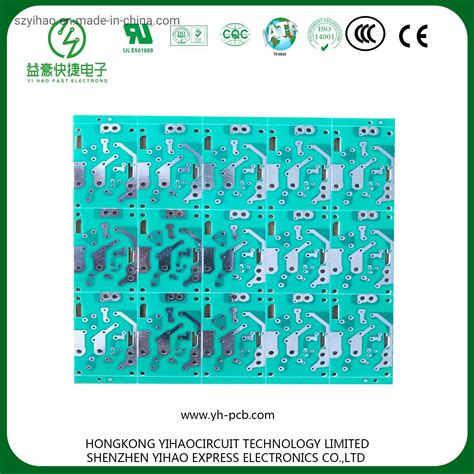Mastering Circuits Assembly: Techniques for Precision and Efficiency
Key Takeaways
Mastering pcb assembly requires a deep understanding of both precision and efficiency in every stage of the process. Emphasizing these aspects not only ensures the reliability of pcba but also enhances overall productivity. One significant takeaway is the importance of selecting the right tools; precision tools can dramatically improve accuracy during assembly, thereby reducing errors that may lead to costly rework. Additionally, employing systematic techniques such as thorough placement review and testing at various stages helps to identify and mitigate potential issues early on. Implementing best practices like maintaining a clean workspace and organizing components effectively can further streamline the assembly process. Cultivating an awareness of common challenges—such as managing diverse component sizes and dealing with soldering difficulties—is crucial for developing advanced strategies tailored to your specific assembly environment. By consistently applying these strategies in pcb assembly, you are likely to witness noticeable improvements in both speed and quality, ultimately resulting in more efficient pcba outcomes.
Introduction to Circuits Assembly: Importance of Precision and Efficiency
In the world of pcb assembly and pcba, precision and efficiency are crucial for achieving high-quality outcomes in electronic projects. The ability to assemble circuits with utmost accuracy impacts not only the performance of the assembled products but also the overall cost-effectiveness of production. When circuit boards are assembled with precision, the likelihood of operational failures diminishes significantly, ensuring that the final product meets both safety standards and consumer expectations. Moreover, adopting efficient assembly techniques can significantly reduce production time, allowing for faster market readiness. Understanding the interplay between precision and efficiency is paramount; every component placed accurately saves time and resources down the line. Therefore, a focus on enhancing these aspects not only streamlines individual processes but contributes holistically to operational success in circuits assembly. As engineers and technicians aim to refine their skills, mastering these elements will empower them to deliver superior results in their projects while maintaining competitive advantages in an ever-evolving industry landscape.
Essential Tools for Successful Circuits Assembly
In the realm of pcb assembly and pcba, having the right tools at your disposal is crucial for achieving precision and efficiency in the assembly process. The selection of tools can significantly impact the quality of your work, as well as the speed at which tasks are completed. A well-rounded toolkit for circuits assembly typically includes:
| Tool | Purpose |
|---|---|
| Soldering Iron | Essential for joining components to the board. |
| Soldering Station | Offers better temperature control for precision. |
| Digital Multimeter | Used to test circuit integrity and functionality. |
| Tweezers | Ideal for handling small components accurately. |
| Magnifying Glass or Microscope | Enhances visibility of intricate work. |
The use of a reliable soldering iron is imperative, as it allows for clean and consistent solder joints, which are vital to reducing defects in pcb assembly. Similarly, a good-quality digital multimeter helps ensure that every joint meets desired specifications, providing peace of mind during testing phases. In addition to these tools, accessories such as anti-static wrist straps can protect sensitive components from electrostatic discharge, promoting longevity and reliable performance.
Moreover, incorporating innovative tools like automatic pick-and-place machines can drastically speed up production in high-volume scenarios while maintaining accuracy. By utilizing these essential tools effectively, you can not only enhance your skills but also streamline your workflows in pcba, paving the way for optimal results in your circuits assembly projects.
Techniques for Enhancing Precision in Circuits Assembly
In the realm of pcb assembly, achieving high precision is crucial for ensuring the reliability and performance of electronic devices. A primary technique to enhance precision is through the meticulous design of the printed circuit board (PCB) layout itself. Proper spacing and alignment not only streamline the pcba process but also minimize the risk of errors during assembly. Additionally, leveraging advanced tools such as automated pick-and-place machines can significantly boost accuracy in component placement. These machines are designed to handle a variety of part sizes and types with great precision, resulting in more consistent assembly outcomes.
Furthermore, careful consideration must be given to soldering techniques. Techniques such as reflow and wave soldering can optimize connections while reducing defects. It is also essential to maintain a controlled environment during assembly; variations in temperature and humidity can adversely affect solder quality and the overall integrity of the pcb assembly.
Another aspect worth mentioning is conducting regular calibration of equipment used in the pcba process. Calibration ensures that machines operate within their specified tolerances, thus preventing potential discrepancies that could lead to faulty assemblies. Adopting these techniques not only enhances precision but also substantially improves efficiency, leading to better overall product quality. In summary, embracing a comprehensive approach that integrates design integrity, advanced tools, and rigorous practices will result in superior outcomes in circuits assembly processes.
Best Practices for Streamlining the Assembly Process
To achieve optimal results in pcb assembly, it is essential to adopt effective practices that enhance both precision and efficiency. One of the foremost strategies is to develop a structured assembly process. Organizing the workspace and minimizing clutter can significantly reduce the time spent locating tools and components, thus helping to streamline operations. Additionally, utilizing appropriate tools tailored for pcba can greatly enhance productivity. For instance, using automated pick-and-place machines ensures a higher degree of accuracy when positioning components on the board.
“Engaging in regular training sessions allows team members to stay updated with the latest techniques and technologies, which ultimately leads to more proficient assembly processes.”
Moreover, establishing a clear quality control system at each stage of the assembly process is crucial. Implementing checkpoints ensures that any potential issues are caught early, thus minimizing rework and preserving component integrity. It is also advisable to maintain an updated inventory list for all materials required for pcb assembly, making it easier to manage supplies without unnecessary delays.
Streamlining communication among team members further contributes to an efficient workflow. Team briefings before assembly shifts can clarify objectives and address any concerns that may arise during production. By cultivating a collaborative environment where team members share insights and challenges, organizations can enhance their overall performance in circuits assembly.
In summary, integrating best practices such as organized workspaces, the right tools for pcba, stringent quality checks, effective communication, and ongoing training fosters an environment ripe for increasing both precision and efficiency in your circuits assembly endeavors.
Common Challenges in Circuits Assembly and How to Overcome Them
When engaging in pcb assembly, practitioners often encounter various challenges that can hinder the efficiency and precision of the process. One of the most significant issues is ensuring proper alignment during assembly. Misalignment can lead to connectivity issues, which may compromise the entire pcba functionality. To combat this, utilizing precision alignment tools and fixtures can significantly improve accuracy. Another common challenge is managing component placement effectively; a high-density layout can lead to confusion and errors. Implementing automated pick-and-place machines can enhance speed while reducing human error in component arrangement.
Additionally, soldering remains a critical area where issues frequently arise. Inconsistent solder joints can result in weak connections or shorts. Therefore, adopting rigorous soldering techniques and employing appropriate solder materials are paramount for quality assurance. Lastly, keeping a close watch on environmental factors such as temperature and humidity is essential; fluctuations can impact assembly quality negatively. Utilizing controlled environments for pcba processes not only enhances reliability but also positions engineers to tackle these challenges adeptly, ultimately leading to successful circuits assembly outcomes.
Advanced Strategies for Efficient Circuits Assembly
In order to achieve optimal results in pcb assembly, it’s crucial to employ advanced strategies that enhance both precision and efficiency. One effective approach is the utilization of automated pcba equipment, which can significantly reduce human error and time consumption during the assembly process. Moreover, implementing rigorous quality control measures at each stage of the assembly can help in early identification of defects, thereby minimizing costly rework later on.
Using software simulations for circuit design can also streamline the learning curve for new assemblers, allowing them to visualize outcomes before actual assembly begins. Additionally, regular training on the latest circuit assembly techniques and tools ensures that team members remain adept and ready to adopt new methodologies that arise from ongoing technological advancements.
Furthermore, fostering a culture of continuous improvement within teams can lead to innovative solutions for common challenges faced in circuits assembly. By encouraging collaboration and sharing of best practices among team members, companies can refine their processes, ensuring that every aspect of pcb assembly is executed with maximum efficacy. These advanced strategies not only aid in achieving higher quality outcomes but also significantly enhance productivity levels across operations.
Case Studies: Successful Applications of Precision Techniques
In the realm of pcb assembly, precision techniques have proven essential for producing high-quality pcba outcomes. A notable case study involved a manufacturer specializing in high-frequency circuit designs, which adopted advanced soldering methods and precision placement tools. By implementing laser alignment and automated pick-and-place systems, they significantly minimized misalignments and solder defects. This meticulous attention to detail reduced rework rates by over 30%, illustrating the tangible benefits of precision in circuit assembly.
Another exemplary scenario involved a consumer electronics company that utilized modular assembly methods to streamline their process. These methods rely on standardized components and precise measurements, allowing for quick adjustments and ensuring compatibility across various designs. As a result, they achieved improved efficiency, reducing their overall assembly time by nearly 25%. Furthermore, this approach facilitated easier troubleshooting and maintenance, demonstrating the lasting impact of applying precision techniques not only on assembly efficiency but also on product longevity.
Lastly, consider a healthcare technology developer that faced challenges with high-stakes environments requiring intricate circuit assemblies. By employing robust quality control measures alongside precise calibration tools, they maintained stringent standards while navigating tight deadlines. The company’s dedication to integrating precision-focused strategies within their pcb assembly processes led to critical improvements in product reliability and patient safety outcomes.
These case studies underscore how embracing precision techniques can transform pcba operations, highlighting the significant advantages such practices can deliver across various sectors in enhancing both efficiency and product quality.
Conclusion: Elevating Your Circuits Assembly Skills
In the realm of pcb assembly, elevating your skills hinges on a blend of meticulous practice and the application of effective techniques. The processes involved in pcba should never be underestimated; precision is paramount. Emphasizing quality tools and adopting sound methodologies can markedly improve your capacity to navigate challenges encountered during assembly. Engaging with detailed strategies such as component placement accuracy and the appropriate use of soldering techniques reaffirms your commitment to professionalism in this field. Additionally, by effectively managing time and resources, streamlining the assembly procedure becomes attainable, yielding not only efficiency but also superior outcomes. An ongoing pursuit of knowledge through case studies and industry best practices serves as a catalyst for continuous improvement. Ultimately, embracing these principles will empower you to achieve higher levels of excellence in circuits assembly, transforming everyday practices into extraordinary results.
Conclusion: Elevating Your Circuits Assembly Skills
In the realm of pcb assembly, mastering the art of precision and efficiency is paramount. This article highlighted various techniques and best practices integral to enhancing your skills. By focusing on advanced strategies for pcba, you can significantly improve your assembly processes. Understanding the importance of essential tools not only aids in achieving optimal results but also empowers you to navigate common challenges encountered during assembly. As you embark on your journey to elevate your circuits assembly skills, remember that consistent practice and an openness to learning new techniques are vital. Prioritizing precision reduces mistakes and ultimately leads to a more efficient workflow, ensuring that your endeavors in circuits assembly yield top-quality outcomes. Engage with the material presented, experiment with various methods, and remain committed to refining your approach—these steps will undoubtedly enhance both your expertise and output quality in the ever-evolving field of electrical engineering.
FAQs
What is PCB assembly?
PCB assembly, or PCBA, is the process of soldering electronic components onto a printed circuit board (PCB) to create a functional electronic device.
What are the key techniques for enhancing precision in circuits assembly?
Techniques such as using automated soldering machines, precise component placement, and thorough inspection methods play a critical role in improving precision during circuits assembly.
What essential tools should I have for effective circuits assembly?
Important tools include a soldering iron, solder paste, flux, and various measuring instruments to ensure accuracy while handling the PCBA process.
How can I overcome common challenges in circuits assembly?
Common challenges can be addressed by implementing clear workflows, training personnel on best practices, and utilizing advanced equipment designed to minimize errors.
Are there advanced strategies for improving efficiency in PCB assembly?
Yes, employing techniques such as lean manufacturing principles, investing in automation, and continuous training of staff can significantly enhance efficiency in the PCB assembly process.
For more insights on mastering circuits assembly techniques, please click here: Andwin PCB Assembly

